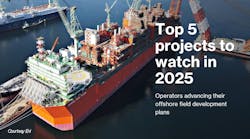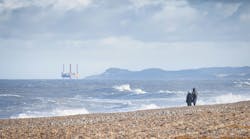North Sea Pilot partners obtain extra time for field development revision
Britain’s North Sea Transition Authority (NSTA) has granted a three-year extension to the second term of the Pilot License P2244 in the UK central North Sea until Dec. 1, 2018.
The license contains the undeveloped Pilot oil field. According to Orcadian Energy, which has an 18.75% carried interest, operator Ping Petroleum is working on a revised subsurface description of the field, based on 3D seismic data supplied by TGS and supported by a team at Orcadian.
This should help progress the project toward a final investment decision.
“Pilot can be a new low-carbon hub on the Western Platform in the central North Sea with the potential to produce a total recoverable resource of well over 100 MMbbl from Pilot and adjacent discoveries," Orcadian CEO Steve Brown said. “Exploration success and renewed licensing of near-infrastructure discoveries could raise the potential recovery from this hub to nearly 500 MMbbl.”
The extra time afforded by the license extension should allow the partners to design a low-emissions development that can also be economic, Brown added, depending on the outcome of the UK government’s consultations on the future of the UK Continental Shelf’s future fiscal regime.
PetroFina discovered Pilot in 1989. Orcadian says the field, which has since been amply appraised, holds contingent resources of 79 MMBbl of viscous oil ranging in gravity from 17ºAPI in the south of the reservoir to 12ºAPI in the north.
Orcadian, which worked on the development prior to Ping coming onboard, settled on a combination of polymer flooding and offshore wind power to achieve cleaner production of the crude.
Polymer, the company asserts, reduces the fluid handling requirements as well as boosting recovery. Ithaca Energy, continuing the work of previous operator Chevron on the Captain Field in the Inner Moray Firth area, has successfully applied polymer flood to increase Captain’s production.
Ping’s current phased development plan for Pilot envisages a polymer flood of the reservoir, an FPSO, and power supplied by a floating wind turbine or nearby offshore wind farm.


